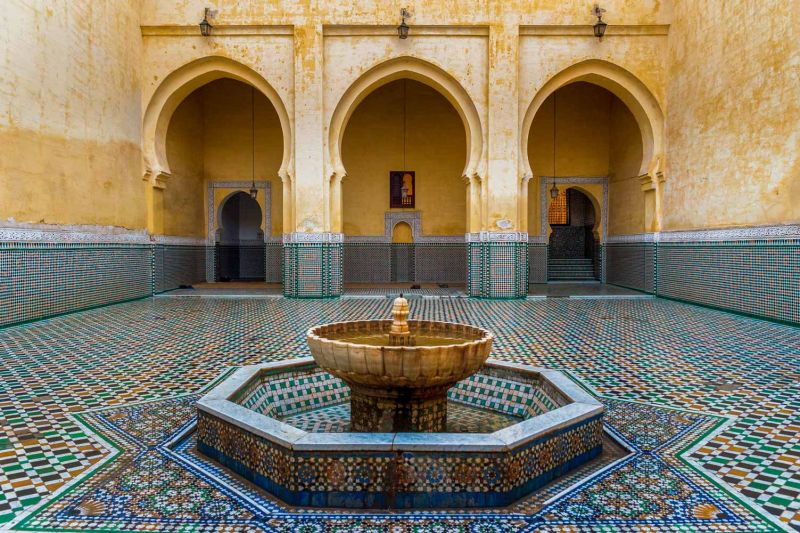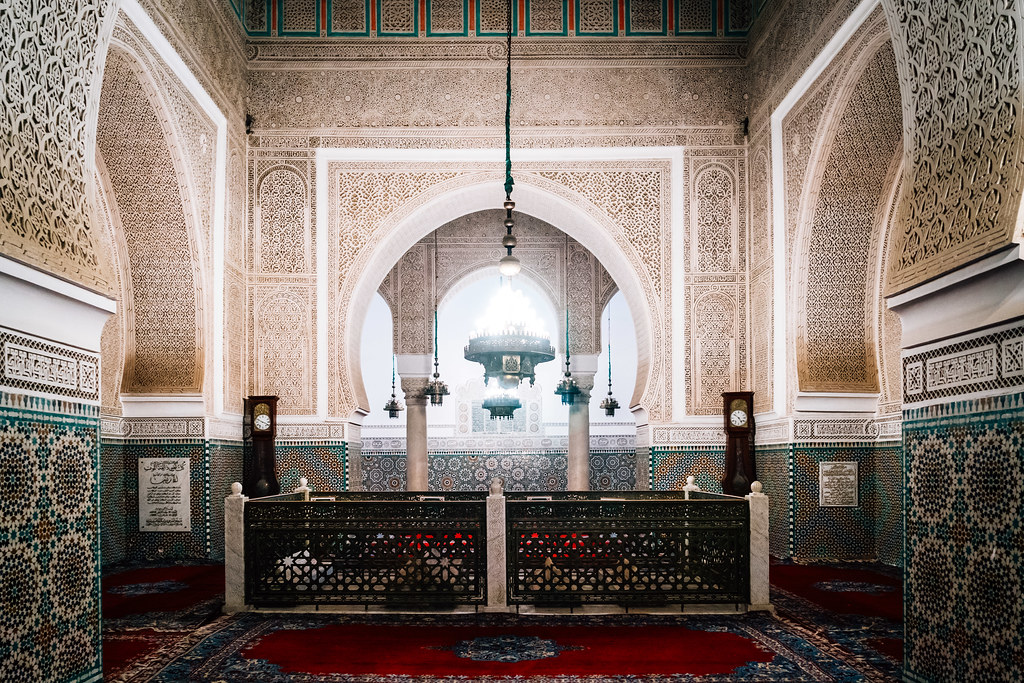
Meknes’ hidden treasure: Exploring the Moulay Ismail mausoleum
Introduction to the Moulay Ismail Mausoleum
Meknes, one of Morocco’s four imperial cities, hosts a lesser-known yet historically profound treasure, the Moulay Ismail Mausoleum. This site honors Sultan Moulay Ismail, who chose Meknes as his imperial capital in the 17th century. Beyond its historical significance, the Mausoleum offers a glimpse into the architectural ingenuity of its era, making it a critical piece of Moroccan heritage. As a resting place for one of the country’s most formidable rulers, it draws visitors who seek to connect with Morocco’s grand past.
Who was Moulay Ismail?
Moulay Ismail, reigning from 1672 to 1727, was a contemporary of Louis XIV of France and is remembered for his formidable rule that expanded Morocco’s boundaries. His legacy is marked by both his ruthless military campaigns and his extensive architectural projects which turned Meknes into a splendid capital. The Sultan’s dedication to creating a monumental city reflected his vision of royal power and permanence, traits that are vividly captured within the walls of his Mausoleum.
Architectural marvels of the mausoleum

The Moulay Ismail Mausoleum is an architectural masterpiece, showcasing the rich Moroccan craftsmanship of the 17th century. The structure is adorned with intricate Islamic tile work, known as zellij, and features soaring arches and elaborate carvings in cedarwood. These elements not only highlight the aesthetic preferences of the period but also the skilled artisans whose work has stood the test of time. The Mausoleum’s design reflects a blend of functionality and divine inspiration, aiming to honor the Sultan’s legacy in every tile and column.
Inside the sacred walls
Within the Mausoleum, the atmosphere shifts to one of reverence and awe. The interior is home to Sultan Moulay Ismail’s tomb, an intricately decorated space that captures the essence of Moroccan spiritual artistry. The use of gold, marble, and precious stones throughout the burial chamber signifies the Sultan’s esteemed status. Visitors often report a profound sense of peace, reflecting the sanctity of the site which has been maintained through centuries of Moroccan history.
The enchanting gardens
Adjacent to the Mausoleum lies a garden that epitomizes the Islamic tradition of creating serene, green spaces that symbolize paradise on earth. These gardens are not only a feast for the eyes with their vibrant flora but also serve as a spiritual sanctuary for visitors. The sound of trickling water from traditional fountains adds to the atmosphere of tranquility, making the gardens an ideal spot for contemplation and relaxation.
Symbolism of water in islamic gardens
In Islamic culture, water is more than a life-sustaining resource; it is a symbol of life, purity, and the flow of divine blessings. The gardens at the Moulay Ismail Mausoleum feature small streams and fountains, which are central to the design philosophy of Islamic gardens. These water features are thoughtfully placed to create a calming ambiance, encouraging reflection on the flow of life and the nature of serenity.
The cultural impact of the mausoleum
The Moulay Ismail Mausoleum does not merely serve as a historical site; it stands as a vibrant cultural icon that continues to influence Moroccan identity. It offers a tangible link to Morocco’s imperial past, allowing current and future generations to connect with their cultural roots. The Mausoleum also serves as a venue for various cultural events that celebrate Moroccan history, music, and art, thereby enriching the community’s cultural life.
The mausoleum as a source of inspiration
Artists and writers have long been inspired by the beauty and history of the Moulay Ismail Mausoleum. It appears frequently in literature, paintings, and even in modern digital media, serving as a muse to those captivated by its legacy. This artistic interest helps propagate the Mausoleum’s historical significance and showcases the enduring allure of Moroccan architectural and cultural heritage.
Visiting the Moulay Ismail mausoleum
For tourists planning to visit the Mausoleum, it is open to both Muslim and non-Muslim visitors, offering a rare glimpse into a site that beautifully marries Moroccan history with Islamic spirituality. The best times to visit are during the cooler morning or late afternoon hours when the light beautifully highlights the intricate details of the architecture.
Practical information for visitors
Before visiting, tourists should note that the Mausoleum requires modest attire as a sign of respect. Photography inside the tomb is restricted, although the exterior and gardens can be freely photographed. Knowledgeable local guides are available to provide insights into the site’s history and architectural details, enhancing the visitor experience.
Conclusion
The Moulay Ismail Mausoleum in Meknes is not just a mausoleum; it is a symbol of Moroccan pride and cultural continuity. It offers visitors an extraordinary look at the country’s architectural brilliance and the rich tapestry of its history. This hidden treasure of Meknes is a must-visit for anyone eager to explore the depths of Moroccan heritage.
FAQs
- What is the historical significance of the Moulay Ismail Mausoleum?
- The Mausoleum commemorates Sultan Moulay Ismail, a key figure in Moroccan history who expanded the empire and transformed Meknes into an imperial city.
- How can I respect local customs while visiting the Mausoleum?
- Dress modestly, speak softly, and refrain from taking photos inside the tomb to show respect at this sacred site.
- What are the best times of year to visit the Moulay Ismail Mausoleum?
- Visit during spring (April to June) or fall (September to November) for the most pleasant weather.
- Are there guided tours available at the Mausoleum?
- Yes, guided tours are available and provide valuable insights into the site’s history and architecture.
- How does the Mausoleum influence modern Moroccan culture?
- It serves as a symbol of Morocco’s rich history and architectural heritage, inspiring cultural pride and artistic expression.
All Categories
- Actividades en Marruecos
- Adventure
- Aventura
- blog
- blog
- Camping salvaje
- City Tours
- country tours
- Desert tours
- Estilo de vida
- Excursiones de un día a Marrakech
- Life Style
- Marrakech Day Trips
- Morocco activities
- Morocoo
- Rutas por el desierto
- Sin categorizar
- viajes por el país
- Visitas por la ciudad
- Wild Camping


